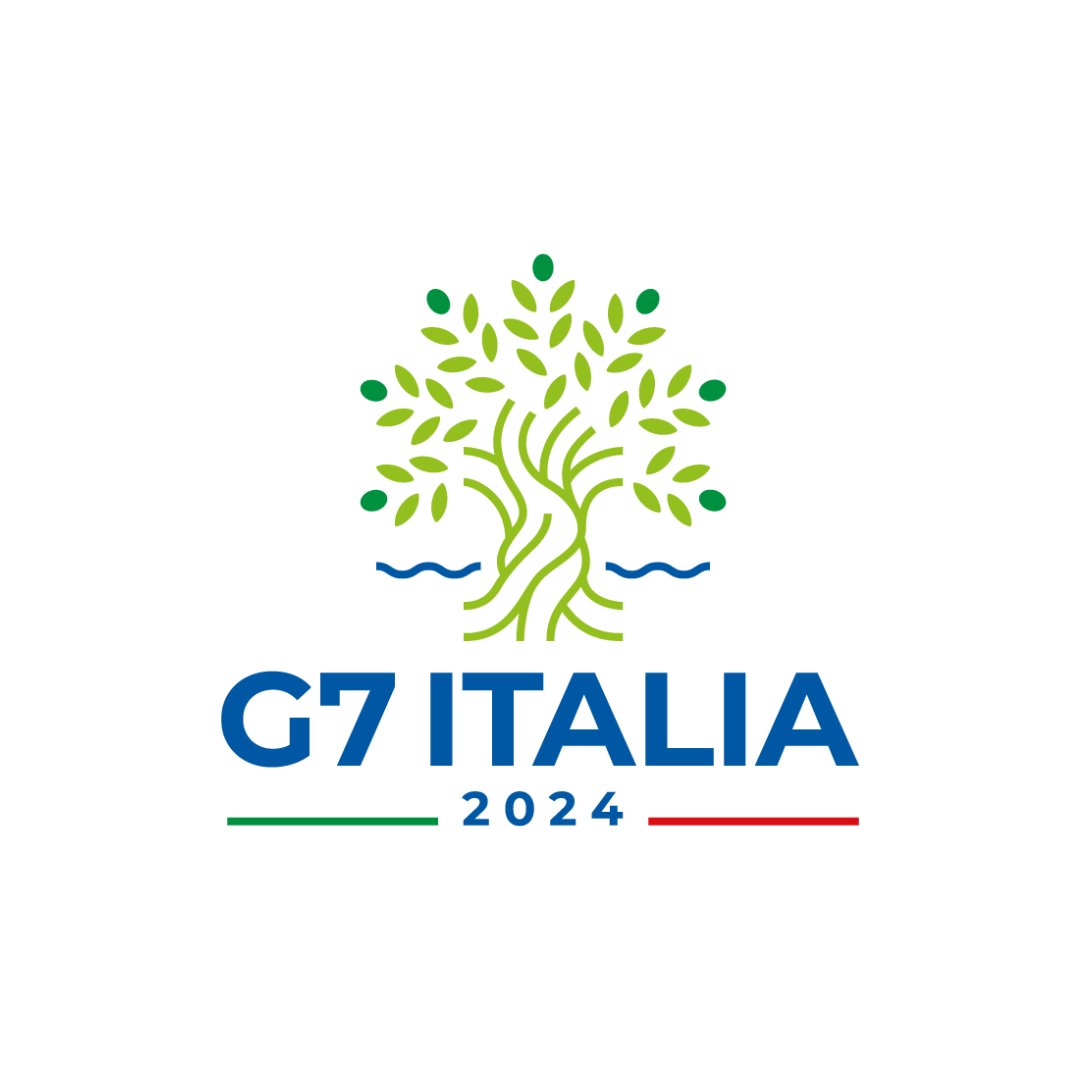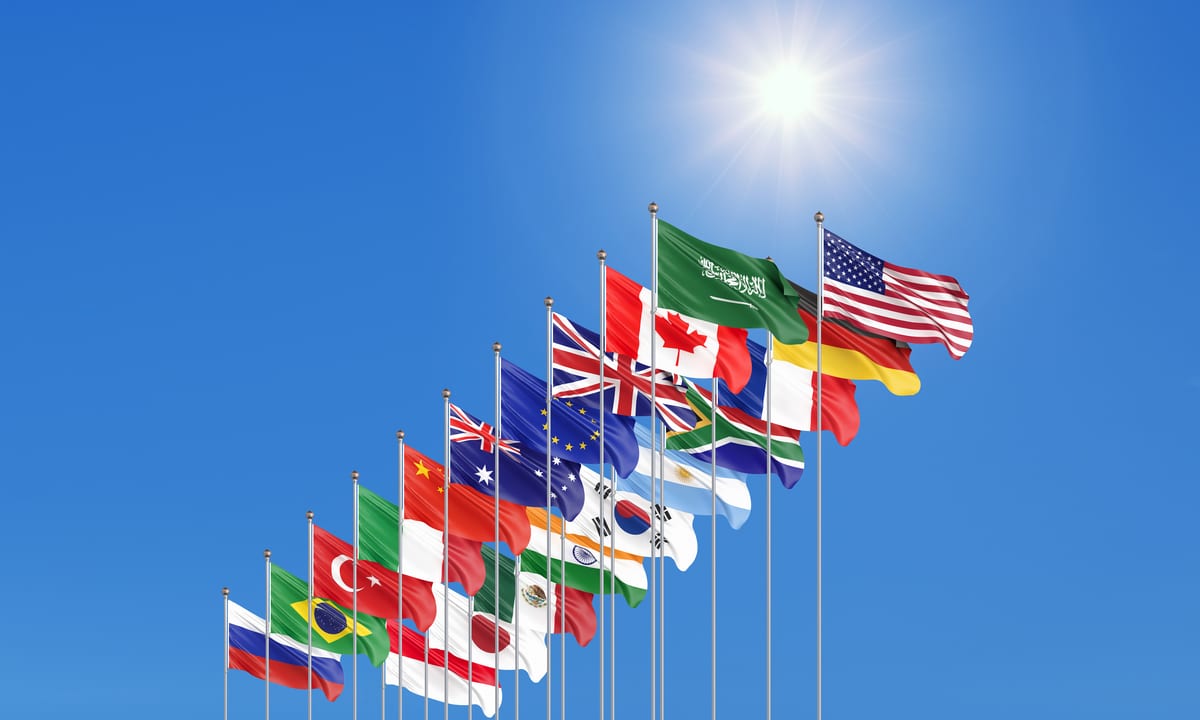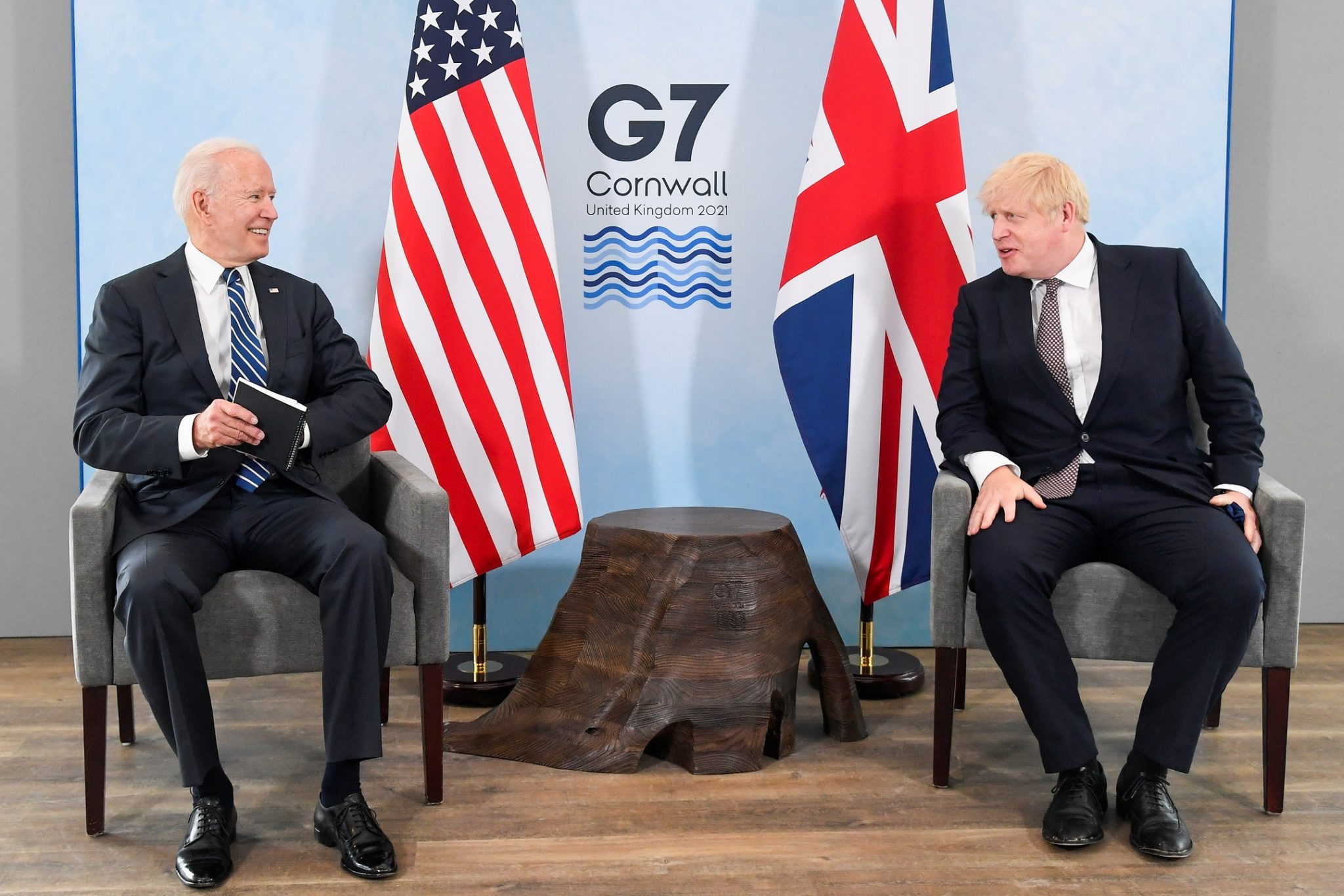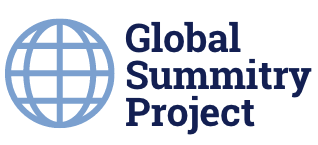G7 Overview
The Group of Seven (G7) is an informal intergovernmental pollical forum of industrialised countries. Today it consists of the United States, Canada, France, Germany, Italy, Japan, and the United Kingdom, plus the EU as a “non-enumerated” member. The countries share common values of democracy, human rights, and open and outward-looking societies. The G7 meets annually to discuss challenges related to global economic governance, international security, and energy policies. Other states and international organisations are frequently invited as guests to participate in G7 meetings and the Leaders’ Summit.
The G7 has a significant influence in the global economy. Its members are advanced economies that account for between 30-43 percent of the world’s gross domestic product and about 75 percent of the global Official Development Assistance (ODA). This makes this Informal an important locus for global financial governance.
History of the G7
The origins of the G7 began with informal discussions between the Finance Ministers of France, the United Kingdom, Germany, and Japan in the early 1970s, known as “Group of Five” meetings. In the 1970s, several major events took place that impacted the world economic system. In navigating these events, which included the collapse of the Bretton Woods system, the first enlargement of the European Community, the first oil crisis, and economic recessions in OECD countries, leading powers at the time found traditional institutions of international cooperation insufficient to reconcile their differences and facilitate a sense of common purpose .[1] In response to the financial crisis that followed the oil shocks in 1973, the heads of government of Germany and France – Helmut Schmidt and Valéry Giscard d’Estaing – proposed a replication of the informal Finance Ministers meetings at the heads of state level. Therefore, in 1975, the heads of state and government of six leading industrial economies at the time – France, Germany, Italy, Japan, the United Kingdom, and the United States – met to discuss the global economy. The leaders discussed the oil shock, the financial crisis, and ways to address the challenges they raised.
Canada was invited to join the following year in 1976, and the Group became known as the G7. Canada’s inclusion was regarded as a North American balancing to a perceived Eurocentrism of the UK, Germany, Italy and France in the G7. The European Union joined the group in 1977. Its inclusion was aided by the United Kingdom holding the European Presidency at the time which allowed it to invite the European Economic Community to the Summit.
Russia’s inclusion into the G7 process began with its participation in select sessions on political issues during the G7 Summits in the beginning of the 1990s. Russia later became a member of the Group in 1998. Russia was never asked to join the Finance Ministers and Central Bankers meetings. Yet despite Russia’s small economy, it was included in the G7/8 with the aim of facilitating its integration into the world economy, encouraging the state to align with free market values, and commit to international processes and norms promoted by the G7. It was also seen as an attempt to offset the inclusion of former Soviet satellite states into the NATO security alliance. After Russia’s inclusion in 1998, the group was then referred to as the “G8”. However, in 2014, Russia was suspended from the G7/8 after Russia’s annexation of Crimea, and the Group met in Brussels instead of the planned Summit that was to be held in Sochi that year. In 2017 Russia announced its withdrawal from the Group and the G8 reverted to being the G7.
The G7 has been described as an “institution and an anti-institution”. It possesses similar qualities to legally established international organisations that have meetings at head-of-government levels, however, it has a far more informal nature given its lack of legal basis, permanent secretariat, and collective information and public relations efforts. This was the intention of key founders of the forum, French President Giscard d’Estaing and German Chancellor Schmidt, who were frustrated by the formality of large international meetings when they served as finance ministers of their respective states. Both leaders wanted to create a mechanism for direct and open exchanges between heads of government that were unburdened by bureaucratic processes. It was believed that such unscripted and honest engagements would generate more productive dialogues that could be translated into effective outcomes.
The focus of the G7 has changed over time where it has expanded its scope to issues in international security, health, development, and climate change. Analysts also suggest that the G7’s work has shifted away from leveraging its collective economic influence towards that of emphasising common values in its influence on approaches to global issues and mobilisation of international institutions.
The G7’s small membership of advanced economies with common values are cited as an advantage through its ability to promote quick decision-making. However, this has also been a source of contention, given its lack of representation. The debt crisis in emerging economies in the 1990s – the Mexico peso crisis in 1994, the Asian financial crisis in 1997, and the Russian financial crisis in 1998 – fuelled the need for greater representation and deeper cooperation on global economic and financial matters. This underlined the limitation of the G7’s small membership. In response to these successive crises, a new intergovernmental forum with representation of emerging economies and developing states was established. This led to the creation of the G20, which has since been established as possibly the prominent Informal – an informal international forum for heads of states to discuss a range of political and economic issues. The G7’s relevance has also been questioned in more recent years as it has faced a declining share of the world economy from its levels of nearly 70 percent when it was founded. Additionally, issues such as climate change and relations with China had led to internal divides within the group, posing potential challenges to its shared values. Currently, the G20 has been cited, and is largely recognized, as the alternative to the G7 for coordinating global economic governance because of its broader representation of states who account for a greater share of the global economy. However, much like the G7, the group is not without its own set of challenges.
Despite these questions and challenges, the G7 has demonstrated considerable coordination in global governance: evidence ts agreement to support a 15 percent global corporate tax rate, its sanctions on Russia for its war in Ukraine, and the launch of the Partnership for Global Infrastructure and Investment to counter China’s Belt and Road Initiative. Additionally, the G7 is supported by its member states, who find value in a direct forum for engagement that they do not have in larger international organisations, such as the UN or NATO Summits.
Organisation of the G7
The G7’s work is carried out through ministerial meetings and working groups that develop commitments to collective action that is outlined in the final statement at the end of the Leaders’ Summit where the heads of state and government meet.
Issues covered by the G7 include:
- Regional affairs
- Nuclear Disarmament and Non-proliferation
- Economic Resilience and Economic Security
- Climate and Energy
- Food
- Health
- Development
- Gender
- Human Rights
- Digitalisation and Science and Technology
G7 Work Streams
The G7’s work is divided into Ministerial meetings, working groups (WG), engagement groups, and Advisory Councils. Most of the negotiations leading to the outcomes of the Leaders’ Summit are carried out by Sherpas, who are assisted by Foreign Affairs Sous-Sherpas (FASS), Sous-Sherpas Finance, and Political Directors. Sherpas are personal representatives of Leaders of the Member States for all agenda issues of the G7 Summit. Their title, Sherpas, came from the same term used by the Himalayan guides that lead mountaineers to the summit of a mountain. The Sherpa is the main representative. The FASS, is a representative of the Ministry of Foreign Affairs and responsible for cross-cutting issues in the environmental, socioeconomic, and development fields. An additional representative serves as the Political Director and is responsible for the foreign policy and security issues. The Sous-Sherpa Finance deals with the economic and financial issues of the Summit Agenda. In preparation for the Summit, the Presidency organises three to four Sherpa meetings, and several post-Summit meetings.
Ministerial meetings support the core parts of the G7’s agenda. During these meetings, ministers and high-level representatives of member states come together to deliberate on policy matters and explore how to achieve policy advances and to collaborate over international global governance arrangements. The number of ministerial meetings and the specific policy areas they cover are decided by the Presidency. Only meetings between Foreign Ministers, and Finance Ministers and Central Bank Governors have remained a permanent fixture throughout the rotating G7 Presidencies. Ministerial meetings have been convened for issues such as trade, the environment, energy, employment, development, health, media, science and technology, culture, justice, the interior, education, and agriculture.
Working groups are created for specific issues. They consist of experts from the G7 member countries. They provide technical and operational perspectives to the issues that are being targeted in the final Leaders’ communique. The WGs are given a mandate and are usually tasked with producing a Final Report for the Summit or negotiating appropriate wording for the final communique. They also follow up on pledges made by the G7. Working groups have been established for issues such as: health, food safety, development, energy, environmental protection, non-proliferation and support for the United Nations’ peacekeeping and peace-consolidating operations. A notable WG is the G7 Accountability Working Group (AWG). The AWG was launched in 2009 under the Italian Presidency and serves as an accountability mechanism for G7. The AWG monitors and assesses the progress of development and development-related commitments made at G7 Summits. Every three years the AWG produces a comprehensive review of all the active G7 commitments. In the interim years, it publishes reports on commitments in specific sectors or belonging to specific themes. These reports enable citizen and civil society monitoring of progress in order to hold G7 members accountable to their commitments.
Advisory Councils are groups of international independent experts appointed by each G7 states that provides policy recommendations to advance action on a specific topic. The Gender Equality Advisory Council (GEAC) is an example of this. Established by Canada in 2018, the GEAC develops recommendations on for the G7 on how to ensure that its policy-making ensures that freedom, opportunity, individual humanity and dignity are promoted for women and girls around the world. The GEAC members participate in G7 ministerial meetings and provide their perspectives and recommendations to the delegates. It has been a regular feature in subsequent G7 Presidencies after its initial introduction in 2018.
Engagement Groups are the main channels through which civil society can be involved in the G7 processes and policies. They consist of non-government participants from G7 members ranging from civil society groups, parliamentarians, think tanks, women, the youth, labour, businesses, and researchers. Civil society was first explicitly recognised in 1995 in the Halifax communique which mentioned promoting transparency and public accountability in international institutions. Since then, the G7 has recognised the role of civil society in addressing a variety of social and economic issues. Engagement Groups play advocacy roles that can bring institutions closer to the grassroots level, and they provide recommendations to the G7 leaders. The official Engagements Groups for the G7 are:
- Business7 (B7): the B7 represents the interests of the G7 business community. It includes the G7 members’ major business federations and provides recommendations on overarching themes that affect the activities of global trade.
- Civil Society 7 (C7): this engagement group brings together civil society organisations, mainly non-state actors, and provides a platform for them to dialogue with the G7. C7 is organised into working groups who develop recommendations to be included in G7 Summit decisions.
- Labour7 (L7): the L7 provides a platform for to represent the interests of workers and employees. It consists of trade union confederations of the G7 states and aims to pass on the core messages of the global trade union movement.
- Science7 (S7): established in 2005, this engagement group consists of the Academies of Science of the member states. It develops science-based statements relating to issues on the Summit agenda.
- Think7 (T7): T7 involves think tanks from G7 states who come together to develop policy-based recommendations for the G7 states. Its work is carried out in task forces covering specific themes determined by the Presidency and produces policy briefs and issue papers.
- Women7 (W7): established in 2018, W7 serves as a platform to promote gender equality and women’s rights. It consists of feminist organisations and women’s rights advocacy groups in G7 states and around the world and develops proposal for G7 governments. W7’s objective is to ensure G7 leaders adopt concrete political and financial commitments that lead to tangible, transformative, and lasting impact on women and girls.
- Youth7 (Y7): the Y7 provides a platform that represents the interests of the younger generation. It consists of young people primarily from G7 states who wish to engage in global governance issues.
Hosting the G7 and the Leaders’ Summit
As noted above, the G7 is an Informal without a legal basis and does not have a permanent secretariat. It operates on a rotating presidency that changes every year in the following order: France, United States, Great Britain, Germany, Japan, Italy and Canada. While the EU attends the G7, it does not chair or host Summits. The presidency sets the thematic priorities and organises the annual summits and meetings of the specialised ministers. Japan took over the presidency from Germany in 2023 and will be succeeded by Italy in 2024.
[1] Putnam, Robert D., and Nicholas Bayne. Hanging together: The seven-power summits. Harvard University Press, 1984.
- G7
- Archive

G7 Canada 2025, Kananaskis Summit Pre-Summit Discussion
2025 will see Canada hosting the 51st G7 Summit in Kananaskis, Alberta. A G7 was first held there in 2002. Following the recent wave of elections in 2024 and flowing into 2025, the G7 Summit will be attended by new heads of states from Germany, Japan, the UK, the US, and the host nation itself.

G7 Italy 2024, Apulia Summit
The G7 marked its 50th anniversary this year when Italy hosted the Summit on June 13-15th in Apulia, southern Italy. In line with the common values of freedom and democracy that underpin the G7 states, Italy aimed to focus on defending the rules-based liberal international system and promoting cooperation with the Global South.

G7 Italy 2024, Apulia Summit Pre-Summit Discussion
The G7 will mark its 50th anniversary this year when Italy hosts the Summit on June 13-15th in Apulia, southern Italy. In line with the common values of freedom and democracy that underpin the G7 states, Italy aims to focus on defending the rules-based liberal international system and promoting cooperation in the Global South.

After the Cornwall G7 Summit: Time to pivot from G7 to G20 geopolitical dynamics
For those for whom international affairs are important to their lives, the Biden trip to Cornwall, London, Brussels and Geneva is welcome indeed. For an American president with foreign policy experience to be re-engaging the United States with Europe and NATO is a relief after the previous four years. While it is good to be “back” in play, it is not clear that the playing field is the same.

G7: An Alliance of Allies Undermining Global Leadership?
Both the G7 and the G20 summit platforms arose from responses to economic and financial challenges. As a result, finance ministers have a dominant role in both the discussion and the discourse among leaders of the major economies. The Covid-19 crisis has broadened the agenda of both groups of leading countries, along with urgency of climate change and the imperative of dealing with systemic social inequalities revealed by the pandemic.
